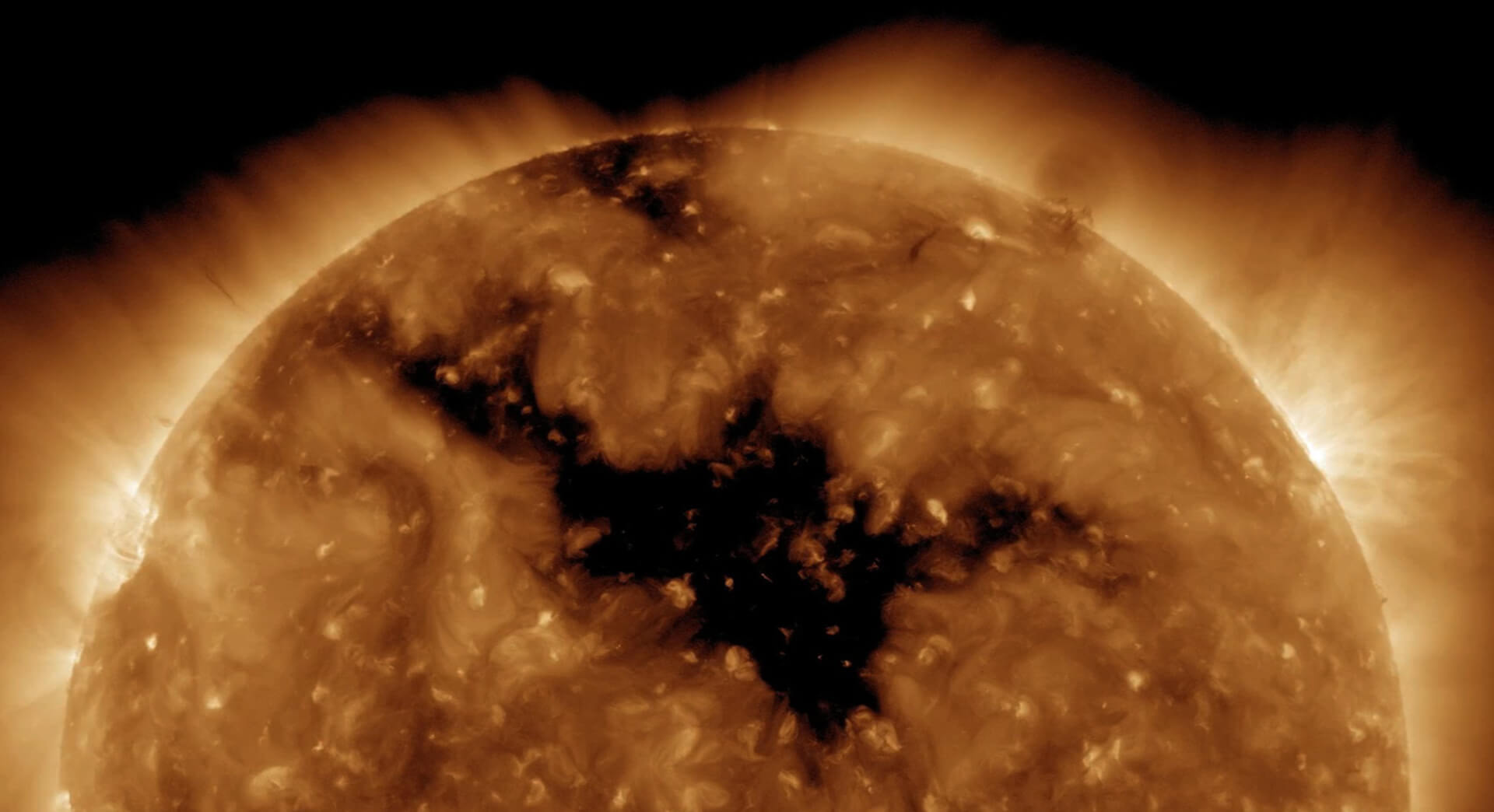There is a giant hole on the sun. Sounds like something straight out of science fiction. The body that is responsible for maintaining life on Earth and keeping the Solar System moving as it does has a massive gash. More specifically, the hole has a diameter over 50 times the size of Earth. Time for panic, right? Not to worry. Even though this coronal hole is the largest ever observed by scientists, the effects on our day to day lives are minimal at best.
After the Sun is completed with solar activity, there is a period of time in which the celestial body essentially “powers down.” Large spots appear on the Sun which are darker than the rest. These dark spots represent areas which have lost a lot of gas and energy. The magnetic pull in the coronal holes disappears, releasing large solar storms towards the Earth. What does that mean for us? Basically, we are rewarded with geomagnetic storms. These storms give certain areas of the Earth the fantastic auroras we have come to know and love. However, not all is golden with these storms. Our GPS and navigation systems can occasionally be affected. Also, some animals lose their ability to find their way because the geomagnetic storms affect their senses, causing some ecological disruption. These negative effects may be amplified due to the sheer massive size of this particular coronal hole.
Coronal holes typically last for a few months and will change position throughout the span. If you are fortunate enough to live in the northern reaches of Canada and Russia, stay tuned for some really cool sights. If you live in Michigan like I do, or in basically any of the 50 states, then you will just have to YouTube videos of the Northern Lights for satisfaction.
Thanks to CNET for the story.







